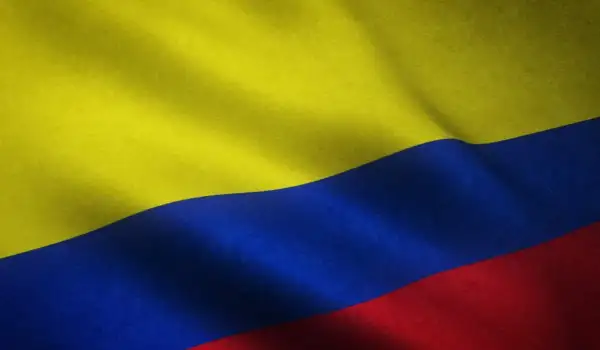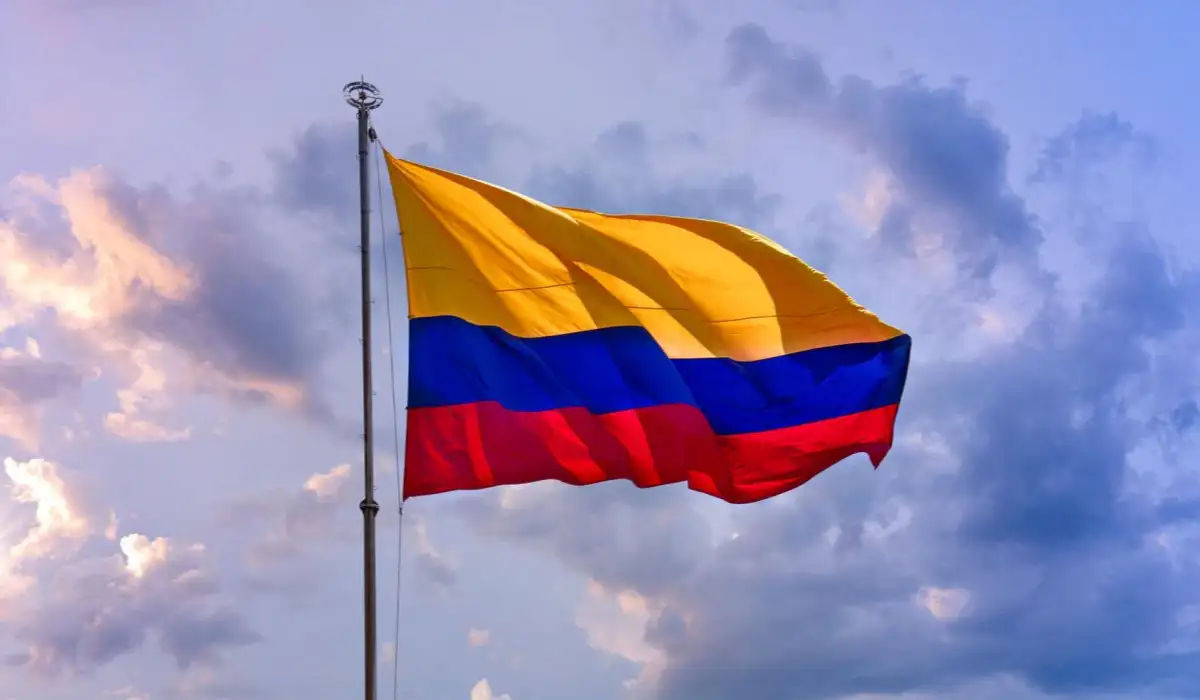Colombia celebrates its Independence Day on July 20th each year, a day that marks the beginning of the 'Junta de Santa Fe.' This significant event, which commenced in Santa Fe de Bogota, the then-capital of the Spanish viceroyalty, sparked off a series of revolutionary movements throughout Latin America.
The decade-long struggle gave birth to the Republic of Gran Colombia, taking in territories of today's Colombia, mainland Ecuador, Panama, Venezuela, parts of northern Peru, and segments of northwestern Brazil. Gran Colombia, before its dissolution in 1831, was considered among the most formidable nations in the western hemisphere, and its historical impact has shaped the political evolution of succeeding Latin American nations.
Important Facts About Colombia Independence Day
Republic of Colombia

Colombia's Independence
Celebrated annually on July 20
Background
Colombia's Independence Day commemorates the establishment of the first representative council against Spanish rule in 1810
Symbol
The flag of Colombia, consisting of horizontal yellow, blue, and red stripes, represents the values of liberty, independence, and resilience.

Area
440,831 sq mi
Capital
Bogotá
History of Colombia Independence Day
Colombia's Independence Day, widely recognized as Grito de Independencia, takes place on July 20 every year. This day marks a monumental milestone in Colombia's history, as it signifies the time in 1810 when Colombians rose up against the Spanish authority. This marked the beginning of a journey that would ultimately lead to the creation of the Republic of Colombia.
During the 16th century, through the period of the Spanish conquest, what is today known as Colombia, fell under Spanish dominance. For over 200 years, the region was on a socio-economic rollercoaster due to this foreign rule. Ideas of independence and freedom, inspired by the European Enlightenment, were simmering among the colonists.
The final straw that spurred Colombia's fight for independence erupted on July 20th, 1810. This protest was conveniently sparked by a seemingly mundane argument about a flower vase. Luis Ruben Diago, a significant figure in colonial society, asked the Spanish ruler of Bogotá at the time for a flower vase for a festive event, only to be rudely refused. This incident, known as the 'Llorente Vase incident,' played as a catalyst for the rebellion, and the word of resistance rapidly diffused out to numerous towns and cities.
The revolution was met with numerous challenges. The initial response resulted in a federation of provinces, each claiming freedom from Spain, but lacking a united front as a single nation. It was until 1819, a long nine years after the first uprising, that these provinces combined to form the Republic of Colombia, a confederation that encompassed contemporary Colombia, Panama, Venezuela, and Ecuador, thanks to the efforts of Simón Bolívar, a leading figure in Latin America's fight for autonomy.
Over time, due to political disagreements, by 1831, Venezuela and Ecuador decided to part ways from Gran Colombia. The country was left with present-day Colombia and Panama, which went its separate way later in 1903.
Today, Colombia commends its Independence Day as a public holiday, marked with music and dancing, parades, as well as other festive events. Although Colombia's road to independence was fraught with difficulties and took a lengthy time, July 20th persists as a potent symbol of the initial defiance against Spanish domination and is honored passionately by Colombians around the globe.
Colombia Independence Day Timeline
Rodrigo de Bastidas Reaches Colombian Soil
The Spanish conquistadors Rodrigo de Bastidas, Juan de la Cosa, and Vasco Núñez de Balboa, were the first Europeans to reach Colombian soil.
Santa Marta, the Oldest City, Was Established
Spanish explorer Rodrigo de Bastidas sets up the city of Santa Marta, the first Spanish settlement in Colombia.
Bogota was founded
Gonzalo Jiménez de Quesada founded Santa Fé de Bogotá, the current capital of the Republic of Colombia.
Start of the Independence Struggle
Inspired by the French Revolution and the American Revolution, Colombia began its revolutionary struggle against Spanish rule.
Battle of Boyacá
On August 7, the decisive Battle of Boyacá, led by Simón Bolívar, resulted in a significant defeat for the Spanish.
Gran Colombia
After the Battle of Boyaca, the territories of Venezuela, Colombia and Ecuador were united to form a country named Gran Colombia.
Dissolution of Gran Colombia
Gran Colombia was dissolved and gave way to the formation of the nations of Venezuela, Colombia, and Ecuador as separate entities.
Establishment of the Republic of Colombia
The constitution of 1886 created a centralised government and officially established the country as the Republic of Colombia.
Colombian Independence Day Celebrations
Every July 20, the country celebrates Independence Day with parades, dancing, music, festivals and displays of the national flag.
Traditions and Customs of Colombia Independence Day
Independence Day Processions
On the 20th of July each year, Colombia organizes grand military marches. These occur mainly in Bogota but are seen across the country. They represent the triumph against Spanish rule, with different services like the military, police, and even schools participating.
Colours of the Colombian Flag Ceremony
One of the highlights during Independence Day celebrations involves the fervent hoisting of the national flag. Public squares, especially Bolivar Square in Bogota, are crowded with dignitaries and civilians for this commemoration.
Performances and Music Festivals
An integral part of the festivities includes concerts and acts that showcase the richness of Colombian culture. Celebrated artists and dancers fill the streets, entertaining with genres like vallenato, cumbia, and salsa. Some national celebrities may even organize concerts.
Firecracker Displays
In sync with festivities, fireworks illuminate the skyline of Colombia on Independence Day. The vibrant display is a highly anticipated event, drawing crowds to the streets for an eyeful of the sparkling spectacle.
Festive Cuisine
No Colombian celebration is complete without their native food. During Independence Day, traditional Colombian meals such as bandeja paisa and ajiaco are relished, as food sharing is ingrained into the nation's celebratory customs.
National Day Off
To ensure active participation, the government declares a national holiday on Independence Day. The work pause across the country allows citizens to join the festivities and pay their respects to their national heroes.
Wearing National Colours
To mark Independence Day, Colombians often dress up in their national colors of yellow, blue, and red. They proudly wave Colombian flags at their homes and workplaces.
Ideas to Celebrate Colombia Independence Day
Colombian Themed Party
You could put together a Colombian inspired party. Use yellow, red, and blue decorations to mirror the colours of Colombia's flag. Serve delicious Colombian cuisine like Bandeja Paisa and Arepas, and don't forget authentic beverages like Aguardiente and Colombian Coffee.
Traditional Dance and Music Event
Throw a fun event with Colombian music like Cumbia, Salsa, Vallenato and more for everyone to dance to. You could also hire a dance expert to guide your guests through classic Colombian dance steps.
Cook Colombian Dishes
Spend the day cooking and eating traditional Colombian dishes. Invite some friends over for a Colombian-themed potluck, or organize a group cooking session so everyone can be involved in the food prep.
Movie Marathon
Celebrate the day with a marathon of Colombian movies or documentaries. This will help you understand and appreciate Colombia's journey towards independence and can be a fun and insightful way to mark the day.
Attend Colombian Festivities
Check out any local Colombian festivals or events and enjoy experiencing traditional music, dance, arts, and food. It's a brilliant way to celebrate Colombian independence while soaking up its rich culture.
Colombian Arts & Crafts
Involve kids and families in the celebration by organizing fun Colombian themed arts and crafts. Ideas could include creating and painting clay pots in the Colombian style or making your own versions of the Colombian flag.
Book or Poetry Reading
Organize a book or poetry reading session highlighting Colombian writers. This gives participants a chance to delve into Colombian history, culture, and lifestyle through the world of literature.
8 Interesting Facts About Colombia
Home to the Amazon Rainforest
About 54% of the land area in Colombia is occupied by forests. It is among the seventeen nations globally that include portions of the Amazon rainforest.
The Coffee Capital of the World
Colombia is globally acclaimed for its coffee production, and it ranks third in terms of worldwide coffee production. It contributes 12% of global coffee production.
Orchids Galore
With more than 4,000 orchid species, Colombia leads the world in terms of orchid diversity. It's national flower is the Cattleya Trianae orchid, named in honor of esteemed Colombian botanist, José Jerónimo Triana.
Birthplace of Magical Realism
Colombian author Gabriel Garcia Marquez exposed the world to magical realism with his novels. His popular work 'One Hundred Years of Solitude' contributed to his winning the Nobel Prize in Literature in 1982.
Biodiversity Hotspot
Colombia stands out as one of the most biologically diverse nations on Earth. It is home to almost 10% of the world's known species, among which, more than 1,900 are bird species - more than what could be found in North America and Europe combined.
Capital In The Mountains
Bogota, the capital of Colombia, is the third highest capital worldwide, ensconced in the Andes at a height of 2,640 meters, or 8,660 feet above sea level.
El Dorado
The fable of El Dorado, a city rich in gold, is linked to the Muisca tribe in Colombia, one among the four advanced civilizations in America.
Leading Emerald Producer
Colombia is globally recognised as the highest contributor of emeralds, producing gems that are known for their intense green color and clarity.
Colombia Independence Day FAQs
Next Colombia Independence Day Dates
| Year | Date | Day |
|---|---|---|
| 2023 | July 20th | Thursday |
| 2024 | July 20th | Saturday |
| 2025 | July 20th | Sunday |
| 2026 | July 20th | Monday |
| 2027 | July 20th | Tuesday |
| What is the pattern? | Every July 20th | |
Colombia Independence Day Word Search
- Colombia
- Independence
- Bogota
- Spanish
- Rebellion
- Freedom
